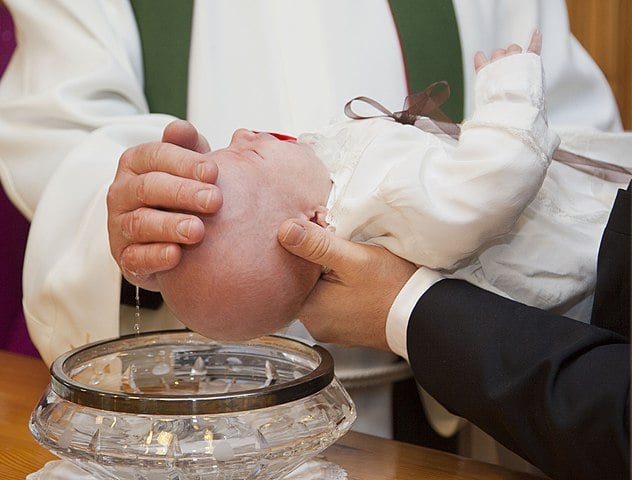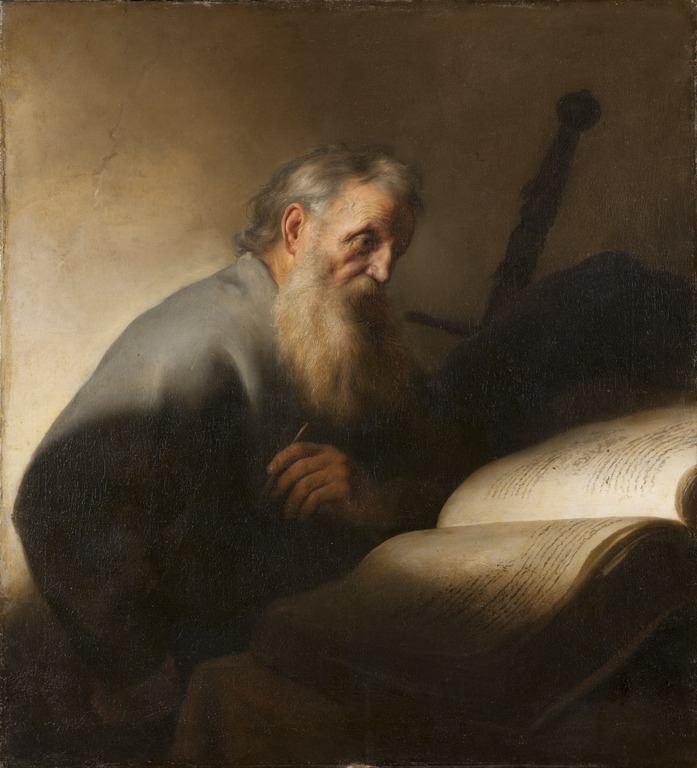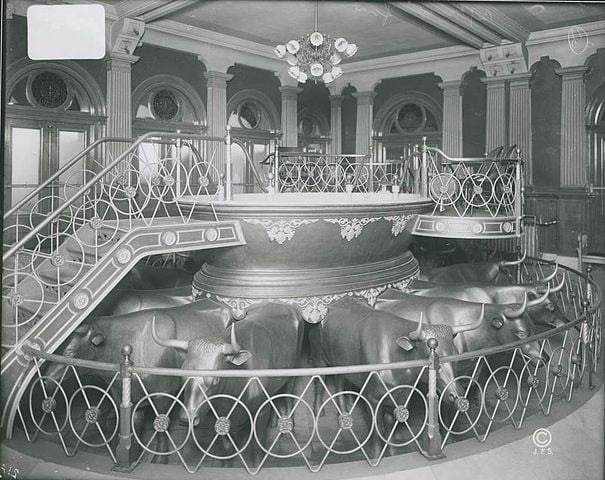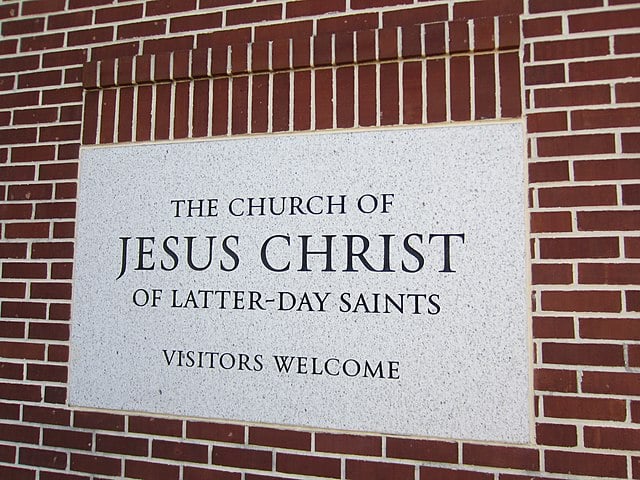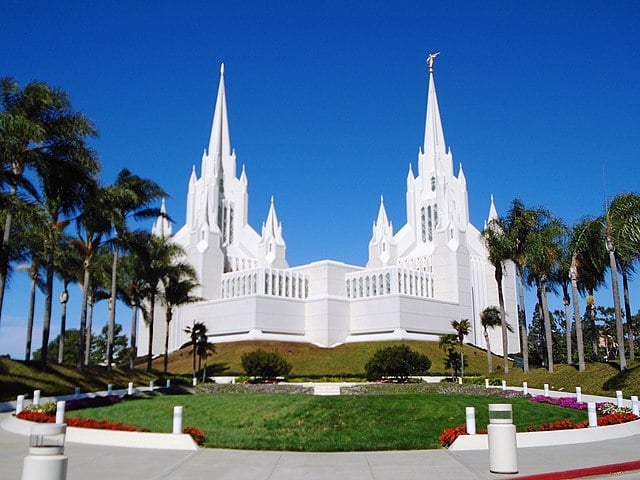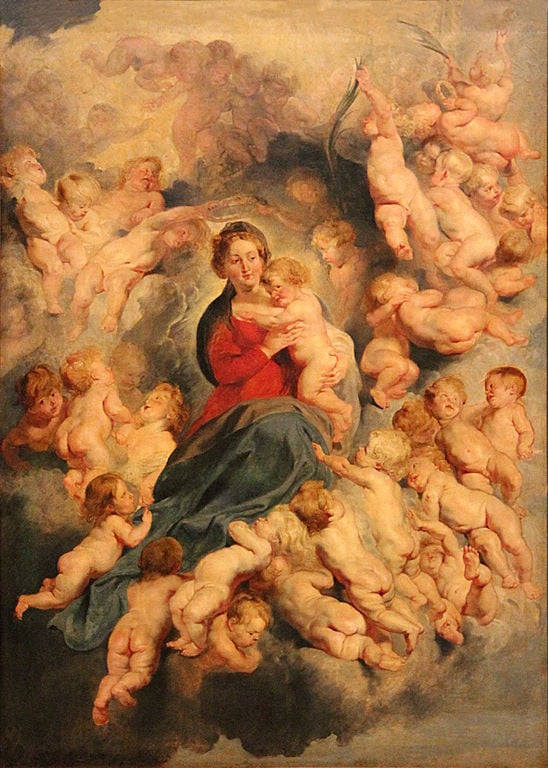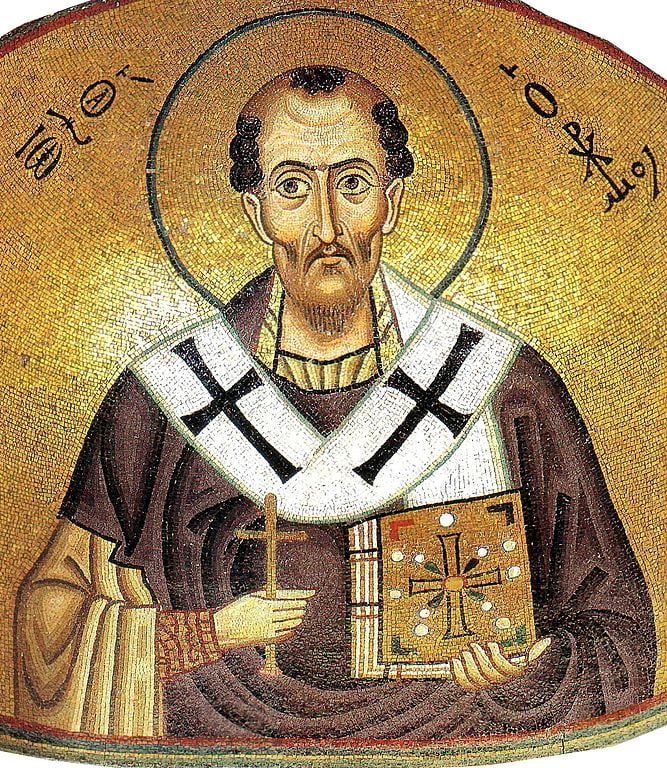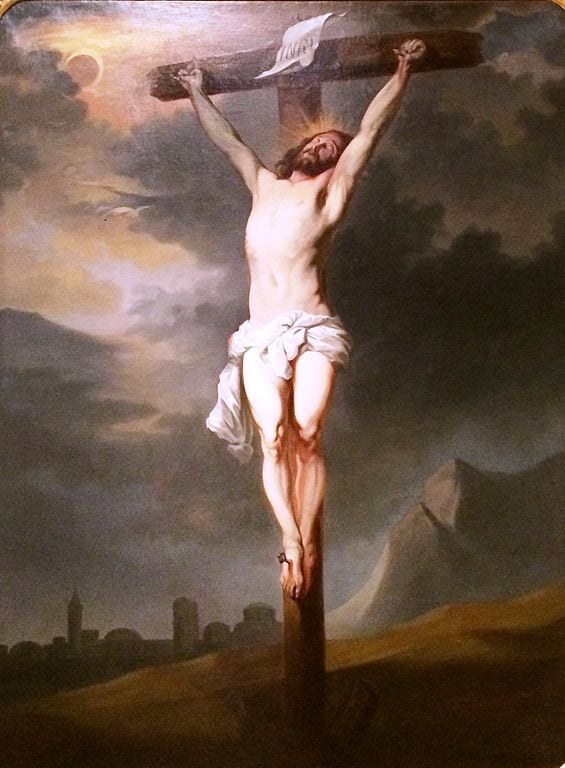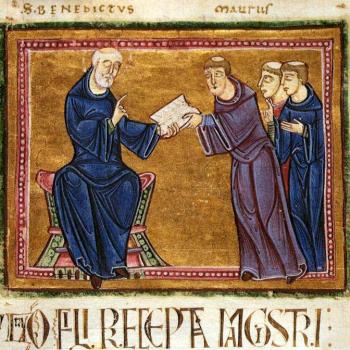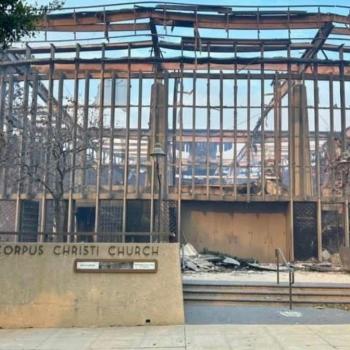
“Religion Behind the Scenes” spotlights the less discussed, but no less crucial, tasks that keep religious communities running, and the people who make it all happen.
The Apostle Paul’s rhetorical question— “What will those people do who receive baptism on behalf of the dead? If the dead are not going to be resurrected, why are people baptized on their behalf?”—has raised eyebrows from almost the day he penned those curious words. More than 200 variant readings of this verse have been offered in an attempt to explain what Paul meant, what “baptism for the dead” is, and why the Apostle Paul did not outright condemn this practice that is never directly referenced anywhere else in the Holy Bible.
While various early Christian sects—some orthodox and some not so orthodox—practiced baptisms for the dead, today, members of The Church of Jesus Christ of Latter-day Saints are one of the few Christian denominations who practice it; and boy do they practice it! Millions of vicarious baptisms for the dead are performed annually in LDS Temples.
In this installment of Religion Behind the Scenes, we will talk with Thurman Lambson, a life-long Temple-going Latter-day Saint. Thurman has regularly participated in baptisms for the dead—on behalf of deceased family members (who were never previously baptized), and on behalf of individuals he never knew. In this fascinating interview, Thurman shares a bit about the history of this sacrament in ancient Christianity, why Latter-day Saint Christians practice it today, and what this ordinance teaches us about Christ’s grace and love.
What exactly is ‘baptism for the dead’?
In The Church of Jesus Christ of Latter-day Saints, we believe that baptism is an ordinance or sacrament of the Church—and something Jesus has asked (or commanded) each of us to participate in. Jesus was baptized by John, and when John pushed back on baptizing Christ (feeling unworthy to do so), Jesus said it was necessary for Him to be baptized in order “to fulfill all righteousness.” [Matthew 3:15] While I realize that not all Christians think baptism is necessary for salvation, nevertheless, the vast majority of Christians belong to a denomination that teaches that baptism is both sacramental and commanded. (Catholicism teaches this. Eastern Orthodoxy teaches this. And many other Christian denominations teach it.) In the Church of Jesus Christ, we too believe that baptism is a commandment, and we submit ourselves to it as a means of submitting ourselves to the Lord’s directives and as a means of “fulfilling all righteousness.”
Now, with that being the case, we recognize that the vast majority of people who have ever lived have not had the opportunity to be baptized. Most have not been Christians, and many have lived in a time or place where they knew nothing about Christianity or Jesus. While today Christianity is the largest religion in the world, approximately 6 billion non-Christians live on the earth currently. These are people who may or may not be part of another religion, but who have not received a Christian baptism and who have not accepted Christ as their savior. In many cases, they don’t actually even know about Jesus, what He taught and commanded, or what Christianity teaches. (I know that is hard to believe, but I have traveled the world and met people from various walks of life who knew nothing of Christ or His teachings.) So, there have been people—anciently and even today—who have been totally ignorant of the need to be baptized, but also ignorant of the doctrines surrounding baptism and Christianity.
We believe that when people die, they go to a place we call the “spirit world” where they await the judgement day and the resurrection. While they’re there, they’re taught the Gospel of Jesus Christ (in its fullness). This is something ancient Christians also believed happened to the dead. If they accept the Gospel while there in the spirit world, they will need sacraments (or ordinances)—much as we need those when we accept the Gospel in mortality. Baptism for the Dead is a means of performing one of those sacraments for the deceased. The ordinance is performed here upon the earth, is available to the deceased (if they accept Christ and His Gospel) in the spirit world, and they are able to embrace that baptism (performed on their behalf) even though they are physically deceased. It is as though they had participated in the ordinance of baptism during their mortal lives, even though it has been vicariously performed for them.
Where does this practice stem from? Meaning, when did it first originate?
Well, in an epistle on the resurrection of the dead, the Apostle Paul wrote: “Else what shall they do which are baptized for the dead, if the dead rise not at all? why are they then baptized for the dead?” [1 Corinthians 15:29] Paul was asking why anyone would perform baptisms for the dead if they didn’t believe in the resurrection. His point was that the ordinance would be pointless if you rejected a doctrine of the resurrection. If, on the other hand, you accept a literal resurrection from the dead, then baptism for the dead would have meaning.
While there has been significant debate about this verse and whether Paul was actually supportive of baptism for the dead, we do know that early Christians performed baptism for the dead for several centuries. So, while no one can prove exactly what Paul meant when he used baptism for the dead to illustrate the resurrection, what we do know is that some in Corinth were practicing it in the first century, Paul doesn’t call them out for doing so, and various Christian sects in the ensuing centuries practiced it at least until the second half of the fourth century. So that’s a bit of the historical background.
However, I should point out that Latter-day Saint Christians don’t practice baptism for the dead because of Paul’s statement in 1 Corinthians 15:29, or because various early Christian sects definitely performed it. While we see those facts as supportive of the practice, our engagement in this ordinance is entirely based on modern revelation.
We have several “Articles of Faith” (or official tenets) of our faith that have bearing on why we practice baptisms for the dead. Our 6th Article of Faith sates that “we believe in the same organization that existed in the Primitive” or New Testament “Church, namely, apostles, prophets, …and so forth.” The 7th one states, “We believe in the gift of…prophecy, revelation, visions, …and so forth.” And our 9th Article of Faith teaches that “We believe all that God has revealed, all that He does now reveal, and we believe that He will yet reveal many great and important things pertaining to the Kingdom of God.” So, while there is historic evidence that New Testament Christians practiced baptisms for the dead, our practice stems from modern revelation received by modern prophets and apostles—starting with the Prophet Joseph Smith, who lived in the first half of the 19th century. And, as a Church, we have been practicing this ordinance since 1840.
How is a baptism for the dead performed? And for whom are they performed?
Anciently, there was most likely some variety from one sect to another—in how they performed this rite. So, I’ll speak to how we do it today—rather than focus on what the various Christian sects of the first four centuries did.
But today, we spend significant time doing genealogical research. Members of The Church of Jesus Christ of Latter-day Saints are encouraged to research their family history and create a genealogical record that traces their family line back as far as they can go. Genealogy has become rather vogue these days—and not just among members of The Church of Jesus Christ. Websites like MyHeritage.com or Ancestry.com are all the rage, and more and more people feel a spirit drawing them to their ancestors. They feel something “calling them” to do genealogical research. Of course, we believe that it’s the Spirit of the Lord encouraging us to seek out our kindred.
Using those genealogical records, we perform baptisms for the dead for our ancestors and others who have died. The way this works is a member of the Church will take the details of a deceased person to an LDS Temple. The patron will go to a locker room and change out of their street clothes, and dress in white. They will enter the Temple’s baptistry (which is traditionally located on the lower level of the Temple). There they will enter a baptismal font—which traditionally rests upon the back of 12 oxen (representing the 12 tribes of Israel). An ordained man will also enter the font and baptize the living person on behalf of the deceased person for whom they are acting as proxy. So, the member of the Church will be baptized “for, and on behalf of” the person who is dead. After the baptismal prayer is said, the ordained man will baptize the proxy by complete immersion. That’s basically how the ordinance works. It is simple, but quite beautiful.
So, if you perform a baptism for the dead, does that deceased person become a Mormon?
Ha-ha! That’s not exactly the goal. We don’t believe that those in the spirit world or in heaven will say “Hey, we’re ‘Mormons” or members of The Church of Jesus Christ of Latter-day Saints.” would we call Jesus a “Mormon,” as many like to call us.
Another Believer / Wikimedia.org
First of all, “Latter-day Saint” is a reference to those of us living today; not to those who lived anciently. So, we’re not making the dead “LATTER-DAY Saints.” Christians were commonly called “saints” in the New Testament. They were ‘former-day saints,” per se. When we baptize for the dead, we’re offering the deceased person (who has yet to fully accept Christ and His Gospel) the opportunity to become Christian, and to accept Jesus as their Savior; and we’re offering them an authorized baptism as a sign of that acceptance. So, we’re baptizing them “unto Christ” rather than unto a latter-day “organization.” Salvation is in Christ, not in an organization that represents Him. The Church is a vehicle to know Him and thorough which to enter into a covenant relationship with Him, but conversion to Christ is the goal. Not conversion to an organization.
Second, our baptisms for the dead don’t force anyone to accept Christ, become a Christian, or become a member of our Church. In our Church’s most recent General Conference, one of our leaders (Elder Gerrit W. Gong, of the Quorum of the Twelve Apostles) noted: “Temple ordinances do not of themselves change…those in the spirit world.” We perform these for all deceased persons—regardless of whether the person (when alive) was religious, faith-filled, righteous, or unrighteous, or inclined to accept this ordinance. We know that the dead have agency, the ability to make choices. We simply perform these rites in an authorized way, and then let the deceased decide for themselves whether they wish to embrace Christ, an authorized baptism, His Church and teachings, etc. That’s not for us to judge. And we certainly don’t believe that performing a baptism for the dead robs the deceased of the agency to reject the ordinance if they so choose.
So, the short answer to your question is “No!” Deceased people are not turned into “Mormons” if we perform a baptism for the dead on their behalf.
So, who can perform a baptism for the dead?
That’s a great question. Since there are various parts to this, various people can participate in a variety of ways. So, for example, the genealogical research that is done prior to the baptism is sometimes performed by someone who is a member of The Church of Jesus Christ of Latter-day Saints, but it is also very often done by people of other faith traditions or by people who have no religious background. A non-Latter-day Saint can do the genealogical research that is used by the Church, and I have known some non-LDS folk who have specifically done genealogy for the sake of sending the names of those deceased persons to the Temple to be baptized for the dead.
Beyond My Ken / Wikimedia.org
That being said, in order to enter one of our Temples—not our church buildings, but specifically our Temples—one needs to be a member of The Church of Jesus Christ of Latter-day Saints and be in good standing. You need to be living the basic commandments and striving to live an upright and moral life. About once every other year active members of the Church (who want to enter a dedicated Temple) will participate in what’s called a “Temple Recommend Interview.” In that interview with their ecclesiastical leaders, the member will answer a few questions about their faith and the standards they are choosing to live. Assuming they are committed to Christ and His Gospel, they are issued a “Temple Recommend” which allows them to enter any of the Temples of the Church throughout the world. Thus, they’re able to perform these sacred ordinances on behalf of the deceased who died without them.
How has participating in this influenced you spiritually?
It has unquestionably made me more spiritual and more selfless. It has given me a greater sense of Christ’s love, His grace and mercy. Baptisms for the dead are a token of God’s grace and mercy. I’m not being critical when I say that many Christians feel that if you die without accepting Jesus (or without being baptized) you go to hell. There was certainly a time in the history of Christianity that it was believed that infants who died without baptism would be damned. At one point it was believed they went to hell. Later it was understood that they went to limbo—but still, they were kept out of the presence of God for eternity. Because of beliefs like this, Christianity and its God can look quite harsh and unloving. We appear judgmental, to say the least. But the principle of baptism for the dead—whether practiced by early Christians or by Latter-day Saint Christians—testifies that God loves His children. All of them! And while He will require that ALL accept Christ as their Savior (if they hope to dwell with God in heaven), this ordinance ensures that those who never had a chance to accept Him during mortality (because they died young or because they lived in a part of the world where He was not spoken of) will have their chance at salvation. So, engaging in baptisms for the dead has made me much more aware of how grace-filled and loving God is.
I think it has also caused me to be more sensitive to spiritual promptings. Temples are places set apart from the world. They are different than our Sunday meeting houses (or church buildings). There is a peace there that is unsurpassed. As a consequence, whether you’re going to one of our Temples to perform baptisms for the dead, or one of the many other ordinances (or sacraments) we perform in them, the peace, the quiet, the tranquility there is like nothing you can imagine until you actually experience it for yourself. So, I find that I’m more contemplative because of engaging in baptisms for the dead and other Temple “work.” Each of those Temple ordinances takes me to the Temple to perform them, but also takes me “out of the world” or “away from the world” as I do so. In our world of busyness, it is so nice to have a place to go where there are no cell phones, emails, or to-dos. It is quite and contemplative, and the Spirit of the Lord is remarkably accessible in the House of the Lord.
Have you had any unique experiences with baptism for the dead that you could share with us?
Well, here’s one thing that might make your readers smile. The 4th century Archbishop of Constantinople, St. John Chrysostom, kind of mocked one group of Christians (who practiced baptisms for the dead) because they would have someone hide under the bed of a catechumen who had died unbaptized. Apparently, the dead body would be laid out on the bed, and then someone living would crawl under the bed. The priest would then talk to the corpse of the deceased, asking him if he wished to be baptized. Of course, the corpse couldn’t respond, but the person lying under the bed of the deceased person would respond on behalf of the deceased (as though the deceased were answering the priest’s question), saying he wanted to be baptized. And then the priest would have a baptized Christian stand in on behalf of the deceased, being baptized for him or her. Weird, huh?! Of course, in The Church of Jesus Christ of Latter-day Saints, we don’t do anything like that—but that ancient practice has always given me a chuckle.
On a more serious note, various people have had what we might call “spiritual experiences” engaging in this work. Some who have participated in baptisms for the dead have sensed the presences of the person for whom they were being baptized or felt a spiritual impression that the deceased person had accepted the ordinance performed on their behalf. I don’t want to be overly dramatic because I think most people’s “spiritual experiences” are subtle, personal, and not spectacular. Nonetheless, I remember reading the story of a man named Horatio Picket who lived in southern Utah. Picket had participated regularly in baptisms for the dead and had wondered if the deceased were actually aware that these ordinances were being performed for them—and whether it was something they appreciated or even wanted. On a singular occasion, while in the baptistry of the St. George Utah Temple, Picket had a vision where he saw a large group of women—or, better put, the spirits of a group of deceased women. Their spirits were hovering about a foot or so above the floor and they were deeply focused on the baptismal font and the ordinances being performed therein. When the name of a deceased person was spoken (as part of the baptism for the dead), Picket said he could tell which of the spirits was being referred to, as her face would light up and she appeared to be watching even more intently when it was “her turn” to be baptized vicariously. He said it looked as though some of the women wanted to jump into the baptismal font, and he could tell that they were overjoyed that this ordinance was being performed for them. As the baptismal prayer was said, he could see the lips of many of them mouth the word “Amen” at its conclusion. Now, again, I’m not suggesting in any way that the majority of people who participate in a baptism for the dead will have this kind of experience—and I have no idea why Horatio Picket had it. But I suppose it just illustrates what it is we believe baptism for the dead feels like to those in the spirit world. They want this. They need this. They are overjoyed that they can officially accept Christ (while there) and become baptized as a sign of that acceptance. It’s really quite beautiful, and even powerful to envision.
What else should people know about baptism for the dead?
Well, the one thing that comes to mind is Jesus’ example of acting vicariously on behalf of others. Jesus did for us what we cannot do for ourselves; He paid for our sins and has made it possible for us to be raised from the dead. Thus, His life culminated in a vicarious saving act.
Bjoertvedt / Wikimedia.org
As Christians, it is our goal to live lives that imitate Christ’s life. One way that we can do that is through vicarious acts of service on behalf of others—the living and the dead. For centuries, Catholics have engaged in vicarious acts on behalf of the dead, in order to help them be freed from purgatory. The ancient and modern ordinance of baptism for the dead similarly has the potential to free those who are in a spiritual prison, of sorts. It allows them to formally and fully accept Christ, His Gospel, baptism, and many other components of the Christian faith. Thus, for those of us who participate in baptisms for the dead, this is just one more way that our lives can mirror Christ’s, as we seek to do for others what they cannot do for themselves.
Interview conducted, transcribed, edited, and condensed by Alonzo L. Gaskill.
12/6/2022 5:11:48 PM
